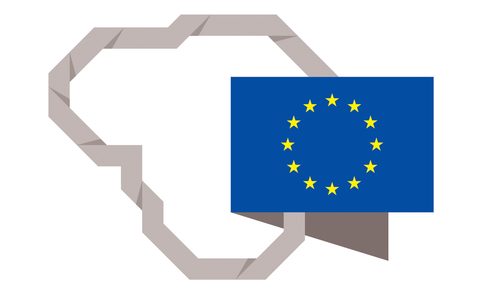In spring, when nature is reborn after the cold winter, egg dying and Easter egg rolling symbolise nature’s rebirth.
A popular custom in many cultures
Egg dying is known to have been a part of the spring festivities of the ancient peoples. This custom was observed even in ancient Egypt, and existed in Slavic and other cultures as well.
The ornamentation of the eggs had magical and symbolic meaning. Decorated eggs are believed to symbolise the beginning of life. So in spring, when nature is reborn after the cold winter, the symbol of the egg takes on an even more important meaning, and egg dying and rolling symbolise nature’s rebirth.
Since the advent of Christianity, eggs have been dyed to celebrate Easter, the Octave of Easter, and the Feast of Saint George.
For Lithuanians – a family tradition
Even in the late 19th century, Lithuanian farmers would place an egg in the first furrow as a sacrifice to Žemyna, the goddess of the earth, and when the animals were driven out into the fields during the Feast of Saint George, they would step over two undyed eggs and two dyed eggs placed under the barn door. Hoping for a more abundant harvest, people would put Easter eggshells in the seed.
Once Christianity took root, egg decorating became a beautiful family tradition for Lithuanians. On Holy Saturday, the entire family would sit down in the morning to decorate eggs. After preparing the table together on Easter day, everyone would roll Easter eggs and give them as gifts to guests and loved ones – especially children.
These traditions later had to be kept out of sight for many years. During the Soviet era, it was forbidden to celebrate church holidays, including Easter. However, families would still get together, nurturing and continuing the traditions of Easter.
Decorating techniques and ornaments
The main Easter egg ornaments have meanings. The sun is the spirit of the world that warms and refreshes it. The moon is the ruler of the night, the time manager for seasonal agricultural work, and the caretaker of vegetation. Stars are a night light for the crops. Plants and flowers symbolise the emergence, growth and flowering of vegetation. Cereal ears denote a good future harvest. Sprigs of rue and spruce represent a green summer. Butterflies, leverets and storks are symbols of spring.
Traditional patterns were created with dashes, teeth, zigzags and herringbone. These patterns would be arranged to form artistic combinations ranging from simple to complex. There are three basic schemes for the traditional composition of symbols and ornaments: two symmetric sides, dividing the egg lengthwise; both ends, dividing the egg crosswise; or spirals around the egg.
Vegetable dye the most common until the early 20th century
The old decorating techniques historically go hand in hand with natural dyes. Up until the beginning of the 20th century, eggs were usually dyed with vegetable dye, using onion skins, birch leaves, hay or the bark of oak or other trees to obtain natural earth tones.
Later, people started using aniline dyes in contrasting bright colours – red, green, black and blue. The colour that the egg was painted had magical meaning to the Lithuanian people. Black symbolised Mother Nature and the goddess Žemyna, the bearer of vegetation. Green meant spring vegetation and cereal sprouts. Red was fertility, birth and life itself. Yellow and brown were ripe cereals. Blue symbolised the sky, carrying bliss for vegetation and crops.
Efforts to preserve the old ways
Depending on how they are coloured and decorated, Easter eggs are classified as either dyed, scratched or “written”. Dyed eggs are eggs that are a single colour. Scratch-work is when a needle, razor or blade is used to carve patterns on monochrome surfaces. The wax-resist method is where designs are “written” in hot wax using a stick or pin. It was usually women would “write” eggs with wax, while scratch-work was done by men.
Another popular technique involves wrapping the egg in onion skins, leaves and ribbons, and then wrapping it in a cloth, twisting it in thread, and boiling it in dye.
There are currently 26 certified artisans in Lithuania who decorate Easter eggs with scratch-work, wax printing and vegetable dyes.













































